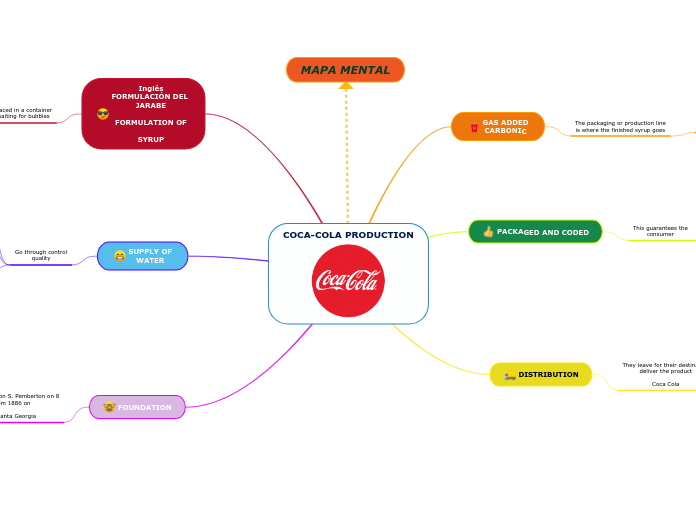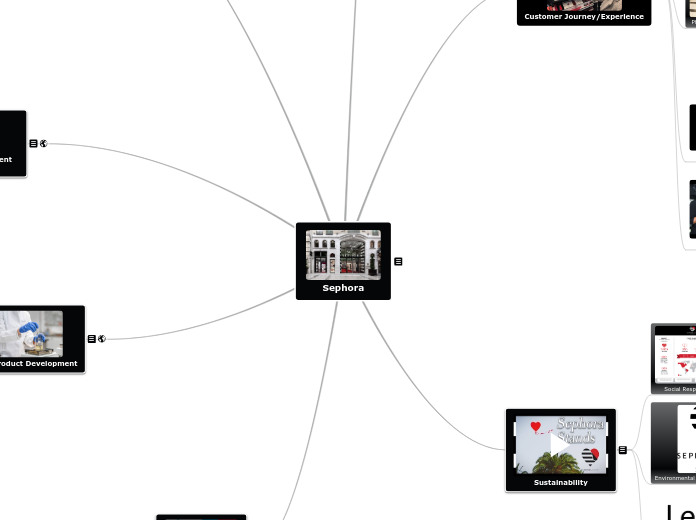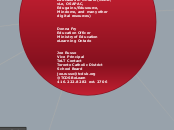Starbucks
Quick Summary of Starbucks :
- 76 countries worldwide
- 28218 coffehouses in total
- In 2019, Starbucks' revenue amounted to approximately 26.51 billion U.S. dollars
- 11th consecutive year of 5% sales growth
- Howard Schulz who expanded Starbucks from the very beginning
- He built a "recession proof product"
- Kevin Johnson took the lead in 2017
- Finest quality coffee beans
- Excellent customer experience
- Constant innovative processes
IE Business School
Master in Management - September 2019 Intake
Operations Management - Prof. Felipe Quintana
Section 2
Ayuna Asalkhanova
7. BUILDING A RESILIENT SUPPLY CHAIN AND MAINTAINING A COMPETTITIVE ADVANTAGE
Starbucks has a number of competitors such as Dunkin Donuts, Costa Coffee, McDonald's Cafés, Tim Hortons, Luckin Coffee and other small competitors who are specializing in other form of beverages, mainly tea brands. It is very complicated to compete with them since they are trying to differeciate themselves each in a different way.
For example, California based Peet's Coffee and Tea operates thanks to its sales of beans. Its strategy is to build a premium brand by offering the freshest coffee on the market.
Another obvious example is Dunkin Donuts which sells bagels and coffee just like Starbucks. Dunkin Donuts offered also an option the same as Starbucks' with caféine and décaféiné.
Starbucks, however, remains one of the best on the market because it has an innovative approach and is not afraid to accept the challenge against other coffeehouses.
6. LOGISTICS
OUTHOUND
There is very little or no presence of intermediaries in product selling. Majority of the products are sold in their own or licensed stores only. As a new venture, the company has launched a new range of single-origin coffees which will be sold through some leading retailers in the U.S.; these are Guatemala Laguna de Ayarza, Rwanda Rift Valley and Timor Mount Ramelau.
INHOUND
The inbound logistics for Starbucks refers to selecting the best quality coffee beans
by the company appointed coffee buyers from coffee producers in Latin America, Africa and Asia. In the case of Starbucks, the green or unroasted beans are procured directly from the farms by the Starbucks buyers. These are transported to the storage sites after which the beans are roasted and packaged. These are now ready to be sent to the distribution centers few of which are company owned and some are operated by other logistic companies. The company does not outsource its procurement to ensure high quality standards right from the point of selection of coffee beans.
5. CUSTOMER EXPERIENCE MANAGEMENT
Customer Experience Management
As a client, I wonder myself why would I spend such an exorbitant amount of money for a cup of coffee...Starbucks replies to my question by providing not just a cup of coffee but creates a whole uplifting experience with its personal approach increasing the customer intimacy and offering customizable products. This is more than just a cup of coffee but a new very customer-oriented coffeehouse which responds to the market difficult customer management challenge.
Community
In 90s the target group of Starbucks were mostly affluent, well-educated, white-collar patrons between 25 and 44 years old. In early 2005 the coffeehouse expanded its community to fancy teenages from wealthy families and to older people who wanted to follow the trend and enjoy the experience.
Customer intimacy
Starbucks becomes intimate with customer by providing a whole new experience by giving a personalized cup with client's name.
Customer loyalty
The loyal customers show up for the premium high quality coffee as often as 18 times per month. There was also a product which Starbucks lauched in 2001 called stored-value card (SVC). This is basically a prepaid, swipable smart card which is the most "significant product introduction since Frappuccino largest sales product development". This card could be used only in Starbucks to pay for transactions in any operated store in the United States.
Customizable products
Starbucks coffeehouse creates a large variety of customizable products. Customers can choose whether they want to have their coffee type (macchiato, cappucino, frappucino) with different types of milk, cream, caramel, etc.
New products are lauched on a regular basic, for example, each holiday season they launch a new hot beverage which can also be customized in the process.
Uplifting experience
Once you step into the Starbucks coffeehouse, there is a lounge atmospheere, a work space and also a space for sitting and extending your legs which is not the case in basic coffehouses.
4. SUPPLIER RELATIONSHIP MANAGEMENT
Although each supplier selection process is unique, Starbucks has key expectations of all Suppliers, regardless of size, location or product/service provided.
Use of logos and trademarks
Starbucks controls the rights to its trademarks and designs which cannot be reproduced in any form without a license. Starbucks does not allow the use of its name, logos, products, stores or other images in Supplier advertising, annual reports or other printed, video or audio communications. If there is a compelling advantage to Starbucks to participate in a Supplier project, it may approve a Supplier’s request for such use. Any such request and justification shall be submitted to the Authorized Starbucks Representative for consideration.
Documentation and forecasts
Starbucks may provide sales or quantity forecasts for the convenience of the Supplier. Such forecasts are for planning purposes only, and do not constitute Orders or binding commitments on behalf of Starbucks. Suppliers must have a valid purchase document before the production of goods or commencement of services. This includes artwork, drawings, prototypes, molds or any other product or service for which the supplier expects payment.
Inspections
Starbucks reserves the right to conduct quality audits and/or inspections of any facility supplying Starbucks branded, non-branded or custom made products. Onsite audits and/or inspections may be announced or unannounced.
Food requirements
Suppliers shall be able to demonstrate compliance with Starbucks Standards for Food Suppliers, preferably by sharing its Global Food Safety Initiative (GFSI) benchmarked scheme audit report, or by sharing food safety audit reports that are reasonably acceptable to Starbucks.
3. TRIPLE A : AGILITY, ADAPTABILITY and ALIGNMENT
The importance of being agile, the adaptability to the fittest and the perfect alignment
Alignement
Alignment : the firm has to align interests of all the firms in the supply network to optimize chain performance.
The coffeehouse has excellent relationship management with its suppliers worldwide. It has a sufficient budget and a good reputation to maintain a sustainable relations with its coffee and food providers.
Adaptability
Adaptability : the firm has to keep up with the market structure and strategies.
Starbucks has adapted with the different market structures worldwide. Its presence in 76 countries confirms this fact. Also, at some point we could see that even during the crisis people continued to purchase its products and so I believe Starbucks manages its strategies very well. During the recession of 2008, the store survived and even expanded.
Agility
Agility : the firm has to react fast to changes in demand and supply. Starbucks perfectly knows how to match its demand and supply. They track precisely their stock of coffee beans, milk and other food products.
We could see it when we went with our group. When Efe and I wanted to purchase the same product, we could see that on the counter there was only one present but the employees had a spared stock to quickly react to our demand.
2. OPERATIONAL INNOVATION
Operational innovation and operational excellence may sound similar, but they are totally different. Operational excellence ensures that businesses run smoothly by making existing processes more efficient.
But operational innovation is different. It means finding entirely new ways to improve internal processes across the board. This could be anything from developing new products to providing better customer service, or anything else a business may offer.
Implementing operational innovation can transform your company in more ways than you could imagine. Read on to learn how it works and how your business could benefit.
Partnership with Alibaba , a whole new innovative experience
1. LEAN MANAGEMENT
Quick summary
4) Kaizen
Kaizen is well applied at Starbucks because the coffeeshop is constantly trying to improve itself, as well as innovate itself.
The most successful innovation was in 1995 when Starbucks introduced a coffee and non-coffre line of Frappuccino beverages which increased the stores sales even during non peak hours.
Starbucks tries to satisfy its clients by providing a special surveys such as Mystery shopper program where a in-house employee goes an incognito client to see how well the team is performing.
3) 5S System
5 S system is applied at Starbucks by sorting, setting in order, shining, standardizing and sustaining.
Sorting is about to keep coffeeshop spaces well organised and to avoid unnecessary items in the place.
Setting in order is to have a space allocated to the line, waiting list for coffees and another one for adding sugar and to mix the coffee up.
Shining is to keep the place and subjects clean which is the case of most Starbucks shops.
Standardizing is about to create a clear approach with orders and clients.
Sustaining is to keep the employees up to date with how the coffeehouse works and to have a good habit of its good maintainance.
2) Lean 6 Sigma
Lean 6 Sigma is a real management tool applied at Starbucks coffeehouses since it creates value for customers by minimising waste (they are trying to reduce the amont of plastic and also use sustainable materials for the packaging). Moreover, Starbucks reduces "defects" by problem solving. For example, when there is a mix-up in customer's order, they fix it immediately for him.
Since it is a time demanding process, Starbucks hire new employees who can fix the order and maintain a good relationships with the client.
1) Takt time
Takt Time = Net Available Work Time / Customer Demand
At Starbucks, there is a Takt time which should be improved since there is not enough of available baristas work time for each customer. Therefore, one of the potential solutions is to hire more baristas. However, it is not a simple task because Starbucks needs to provide special trainings.









